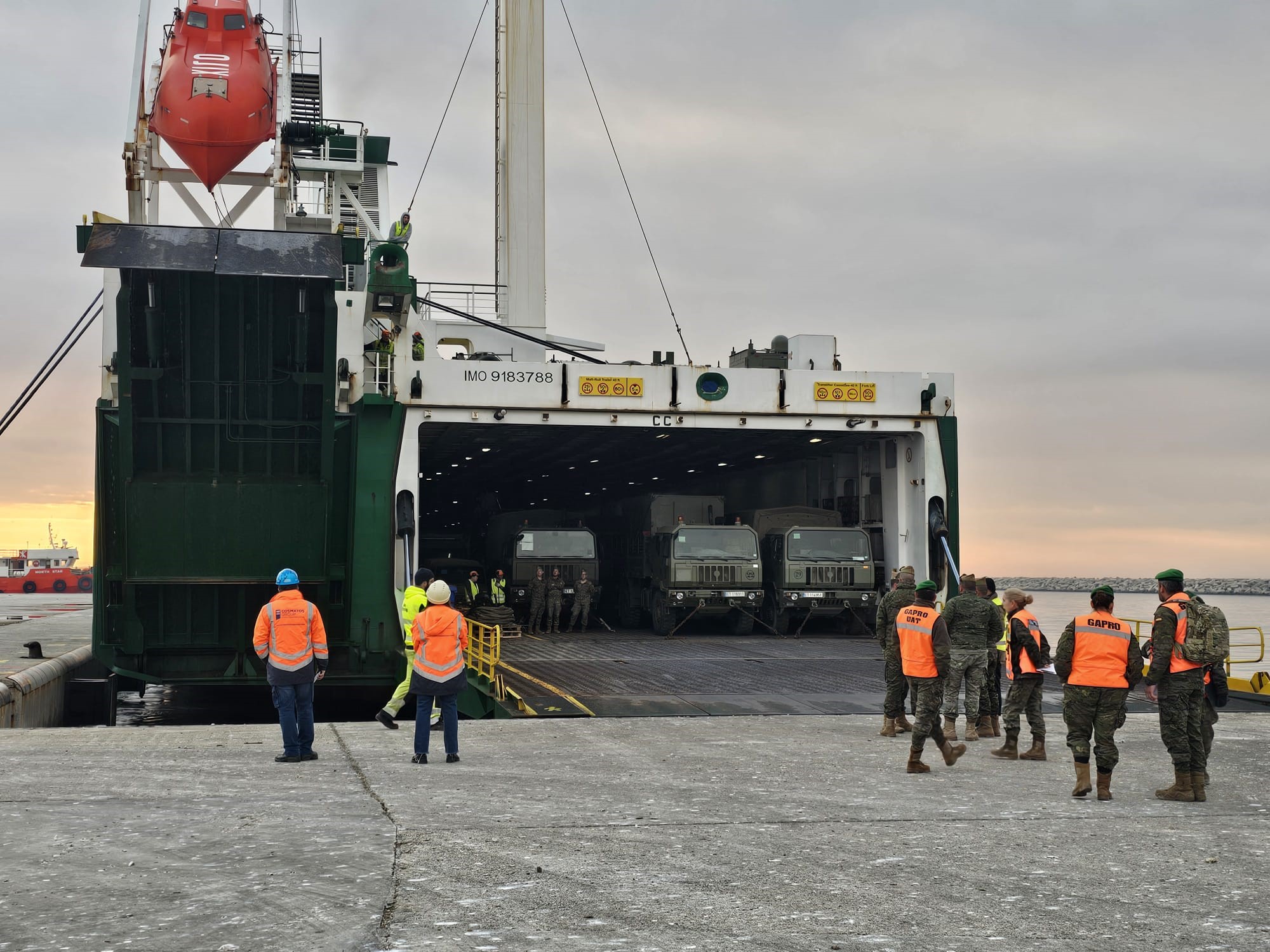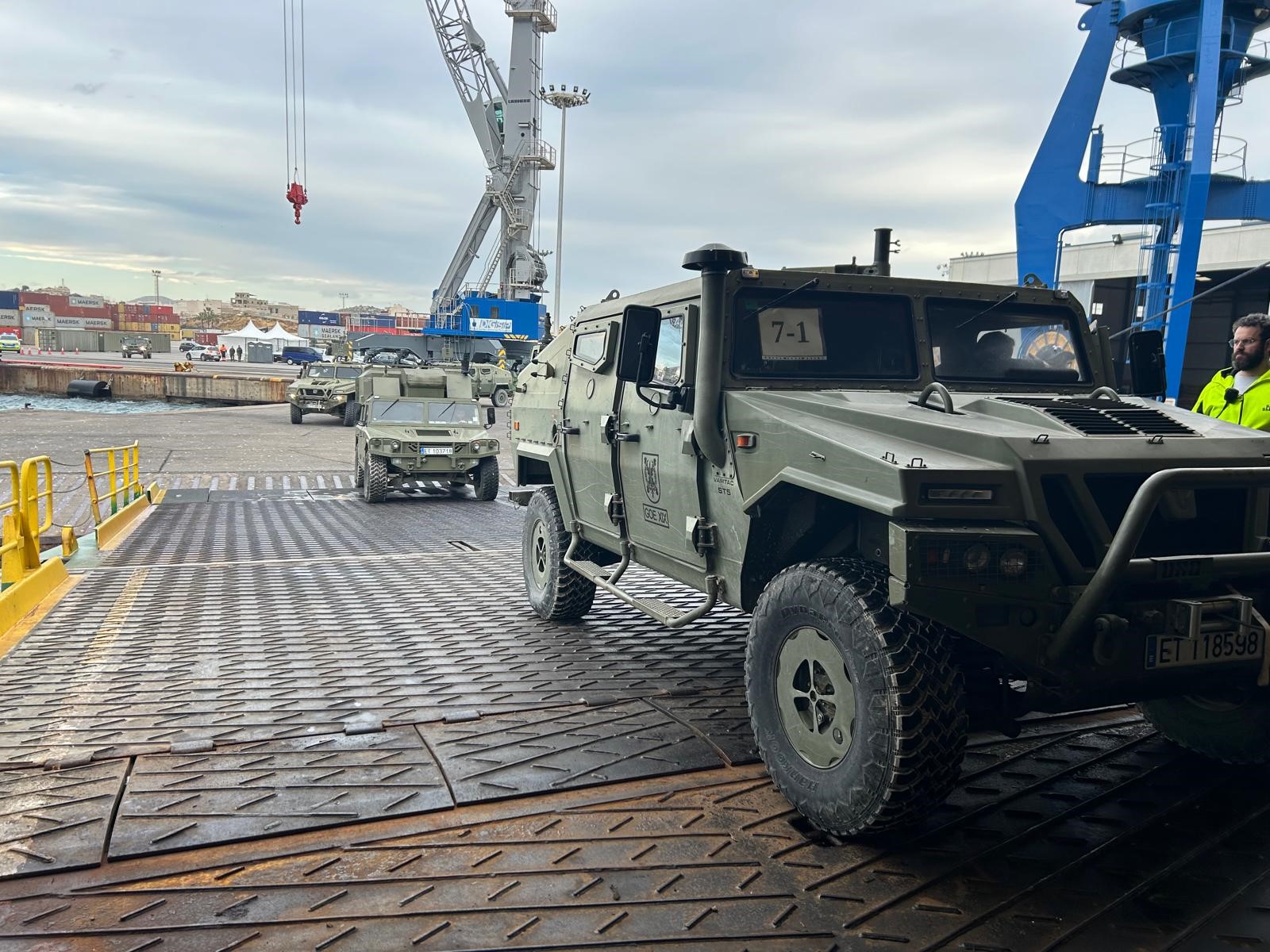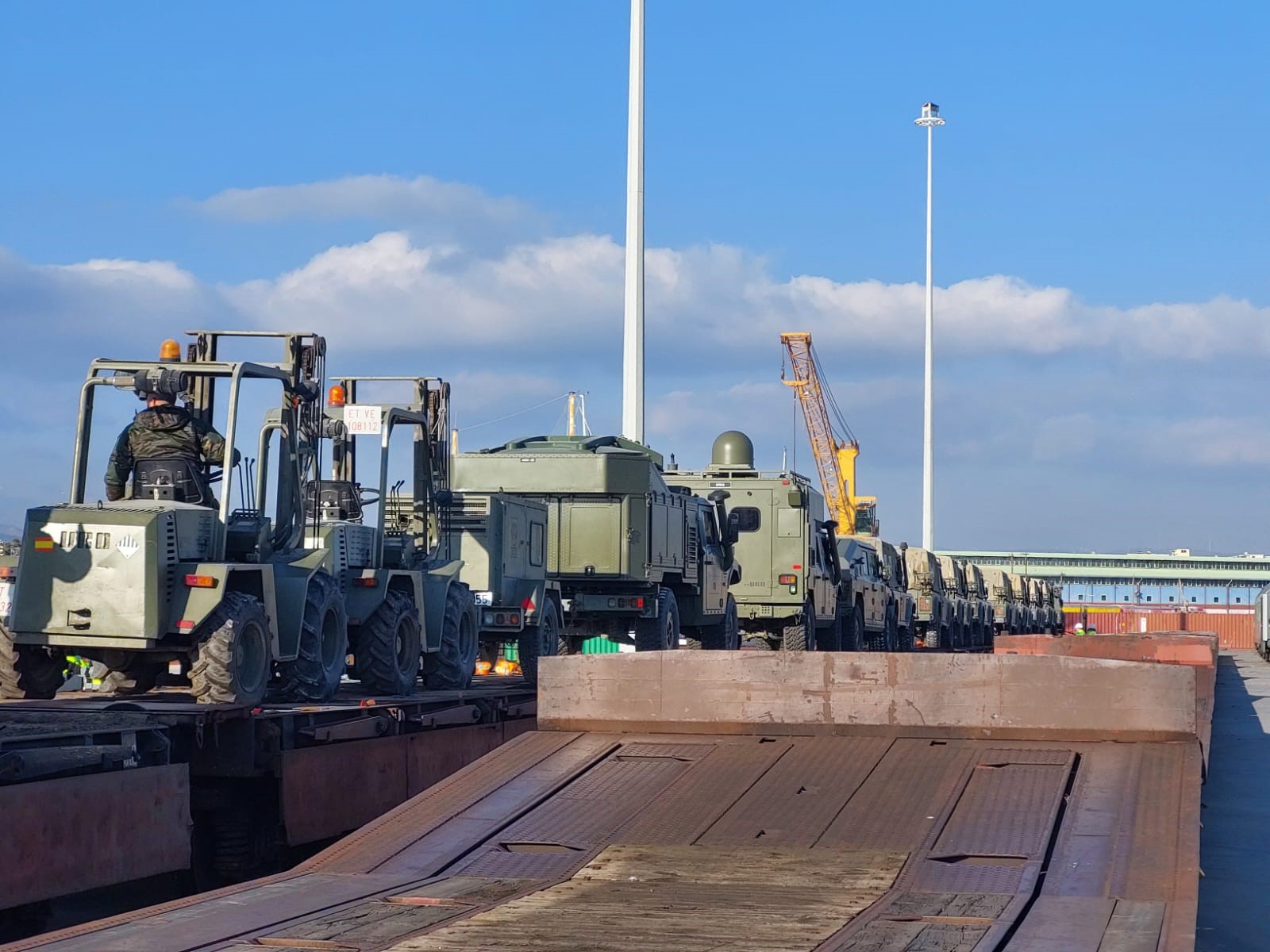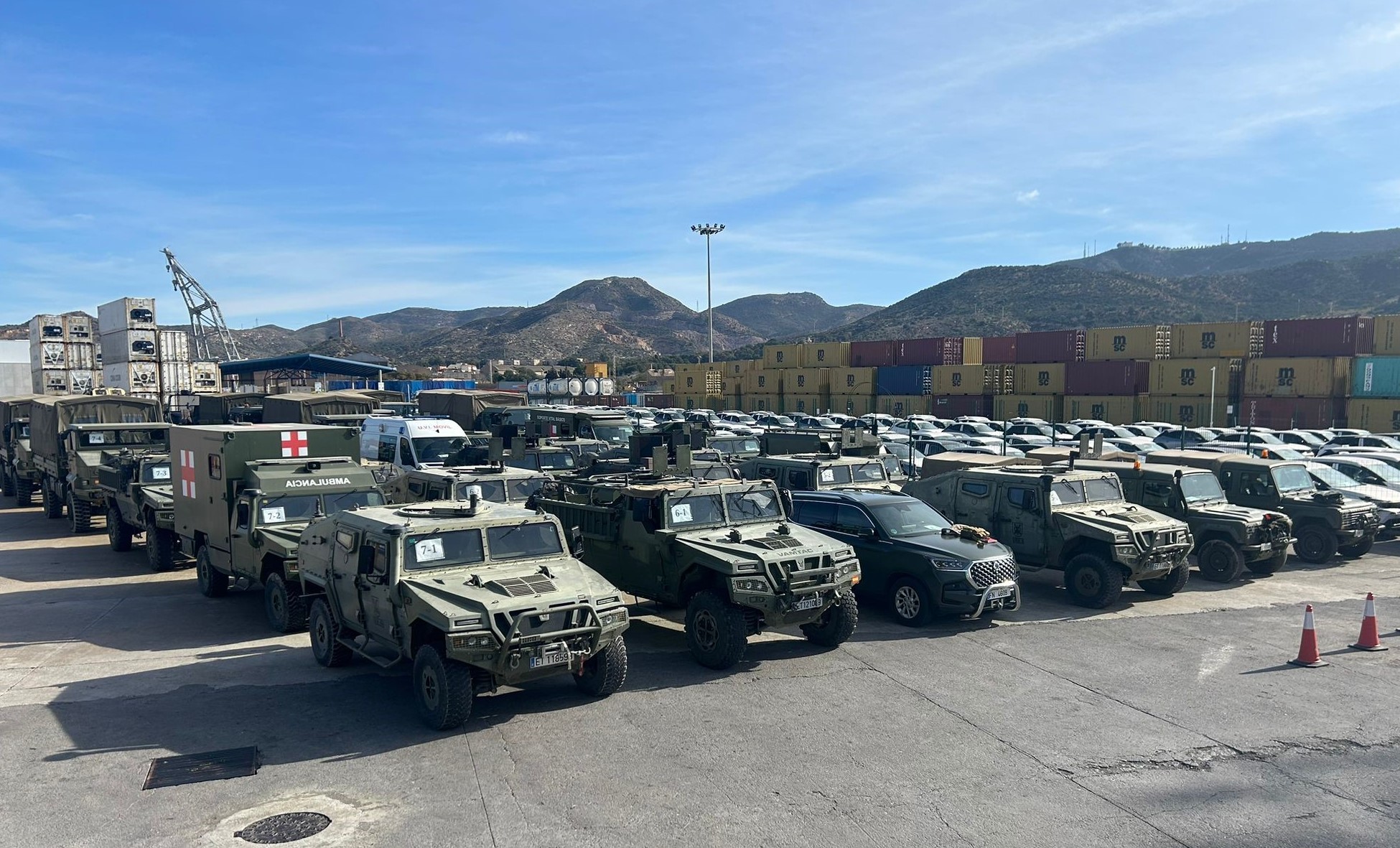
Spanish Armed Forces reach a milestone with deployment on Steadfast Dart 25
- Various multimodal transport alternatives have been used, combining sea, rail and road transport
The Spanish Armed Forces have reached a new milestone with the deployment of military units to bases in Bulgaria and Romania to carry out 'Steadfast Dart (STDT) 25'. They have used several multimodal transport alternatives, combining maritime, rail and road transport.
This week, the Special Operation Units set sail from Cartagena. After arriving at the port of Alexandropolis, they are scheduled to travel by road in separate convoys to the four locations where they will be deployed in Bulgaria.
In terms of the sea deployment, the ship carrying the bulk of the Force set sail from Almería and the land contingent disembarked at the port of Alexandropolis. From there, the materiel and vehicles were transferred by land to three different trains to the railway terminals of Dumbraveni and Voila (Romania), from where the deployment by road was completed in several convoys to the final destination of Cincu (Romania).
Five missions involving Air Force transport aircraft have been scheduled, in addition to two civilian flights chartered for this purpose. The synchronisation of all transport missions, involving 261 tactical vehicles of all types, 39 trailers and 58 containers, has also been crucial.
An innovation was the use of rail, which made it possible to transport a large amount of cargo and military vehicles in a single movement, something that is not possible by road. Rail transport made it possible to move 90% of the tactical vehicles of the Spanish battalion.
The work of the multimodal experts at the Operations Logistics Support Centre was crucial to the success of this operation. Three railway compositions of approximately 500 metres in length and 1,000 tonnes each were used to transport a total of 196 vehicles across three countries: Greece, Bulgaria and Romania. To ensure their security, these compositions were escorted by military personnel from the Legion and the RPEI12 railway company (Engineer Command).
In addition, diplomatic permissions had to be obtained for the transport and movement of troops in transit countries and across borders, as well as logistical support arrangements with host nations.
The NATO Logistics Functional Area Services (LOGFAS) system has been used for the multinational coordination and synchronisation of all transport missions, in particular at the personnel and cargo transfer nodes. To this end, movement control cells have been activated at the Operations Command (MOPS) and within the various land, sea and air components, as well as at intermediate deployment and redeployment.
The rapid deployment and integration capability of the units participating in STDT 25 demonstrates the true value of the Allied Reaction Force (ARF) concept as an effective and credible deterrence tool within the Alliance's strategy. Spain's participation demonstrates its commitment to NATO's most important and challenging initiatives.
STDT 25
STDT 25 will be conducted in Bulgaria, Romania and Greece from 10 to 21 February. It is the largest activity scheduled by NATO in 2025 and is planned within the framework of the ARF Readiness Activities as the first rehearsal for a large-scale deployment of this type of force.
The aim of STDT 25 is to test the interoperability and rapid deployment capabilities of the four components of the ARF-24: Land, Air, Sea and Special Operations Commands, this last one led by Spain.
In total, almost 3,000 military personnel from the Army, Navy, Air and Space Forces are deployed in the different components, representing more than a quarter of the personnel deployed for the activation. More specifically, the army personnel deployed in STDT 25, mainly from the Tercio Don Juan de Austria, represent 35% of the total land component deployed.
This is a complex and large-scale deployment, especially for land and special operations units, not only due to the number of personnel but also because of the amount of equipment and vehicles involved. In this context, the units must demonstrate their deployment capabilities, be ready and prepared to move to the area, and have all their combat capabilities operational in the shortest possible time.
'MOPS' is responsible for the planning and execution of this strategic projection, exercising operational control over the deployed Forces in coordination with the General Staffs and Force Commands, as well as the logistical elements of the Army, Navy, and Space and Air Forces. All of them have worked over the past months to develop the deployment plans for the various units, in coordination with the other allied nations participating in STDT 25.
Fotos





